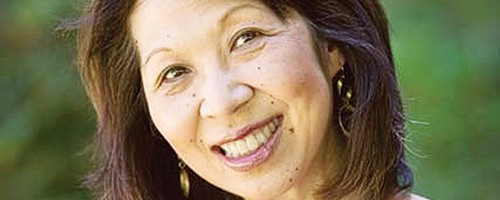If you plan on seeing Eloquent Nude, the story of Modernist photographer Edward Weston and his greatest muse and collaborator, Charis Wilson, make sure to get to Cinema 21 early.
Eloquent Nude
If you plan on seeing Eloquent Nude, the story of Modernist photographer Edward Weston and his greatest muse and collaborator, Charis Wilson, make sure to get to Cinema 21 early. When I went–at 2 p.m. in the afternoon, on Sunday no less, there was a line of artsy types stretching all the way around the block. To top it off, the people in front of me in line were all using walkers, making me a full 15 minutes late for the movie.
As a result, I missed the director Q and A at the beginning of the feature, which is always kind of interesting to hear, if just to find out what kind of person the director is. But on the bright side, I was able to forget all the OPB pledge-drive type stuff that was going on and get right into the meat and potatoes of the film, which was ultimately worth the price of admission and a Pepsi. Eloquent Nude charts the dynamic and tumultuous artistic and personal relationship between Edward Weston and Charis Wilson. Thirty-four and 19 respectively when they met, the two rapidly grew from artist and model to artist and model, lover, collaborator, co-conspirator, and eventually wife.
Wilson possessed writing skills that Weston lacked, and this formed the basis for an artistic partnership that would produce the most enduring images of his career. However, this kind of good deal can of course never last, and the two eventually separated. Weston, crippled by Parkinson’s disease, lost his ability to photograph shortly afterward and died in 1958.
The narrative is accompanied by interviews, a few of Weston’s photographs and dramatic piano music, pretty much your standard documentary fare. That’s not to say it was boring, though. In fact, perhaps its greatest weakness was the fact that it was only an hour long and left me wanting to see more of pretty much everything in the film. The subject itself was interesting enough to guarantee at least some level of success no matter how well or poorly the film is crafted, and NW Documentary seemed to understand this and pretty much get out of the way and let the story tell itself.
While there were some heavy-handed touches, like the breathy voice-overs talking about dramatic points in Weston and Wilson’s lives and the hokey music, on the whole the interviews, photos and film clips of the two at work got the job done without a lot of pointless extras.
Charis Wilson dominated the screen every minute she was the camera’s focus, whether as a young woman gazing powerfully out of Weston’s portraits, as a close-up of the curve of some part of her body, or as a feisty 91-year-old reflecting on her past adventures with wizened humor. In fact, while the other interviews (with art experts, relatives, and such) probably added to the overall picture, I found myself wishing they would shut up and have some more interviews with Wilson, or maybe more of Weston’s photos. What was present was great, especially shots of Weston and Ansel Adams taking pictures side by side, and the portraits of Charis over the course of the relationship that charts its progress from idealized romance to the point where, according to her, it “got thorny.”
Some more actual content would have been great, without as much summary of dramatic events, especially if the film is going to barely break an hour. But, for the most part, the film delivers on its promises, and I can think of a lot worse ways of spending an hour. Just be ready for a wait.



